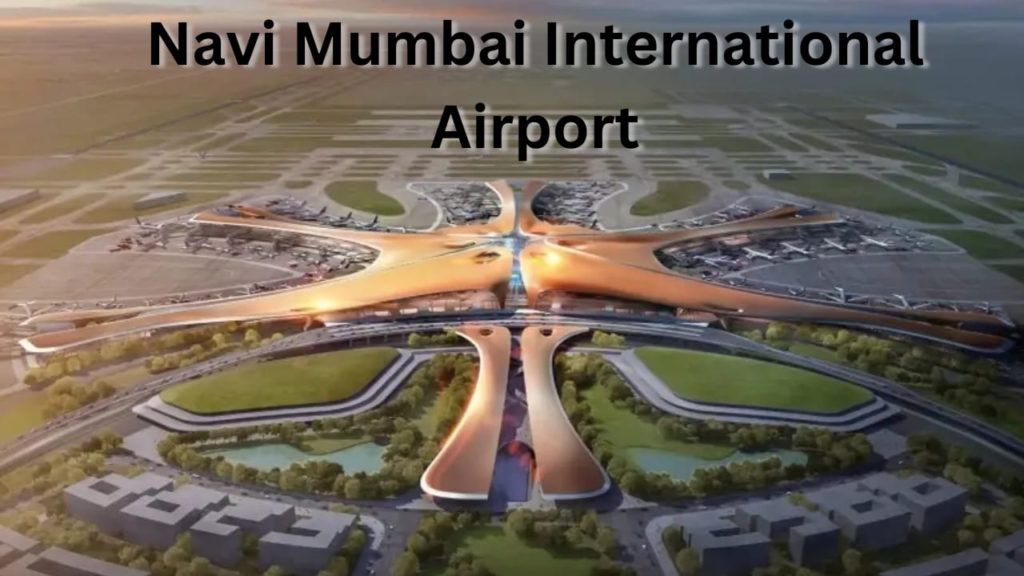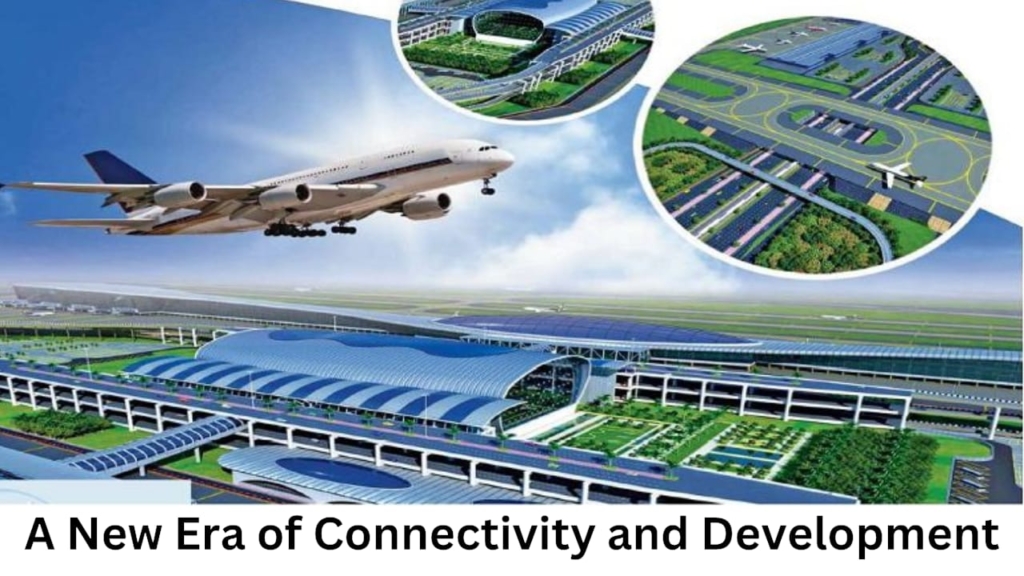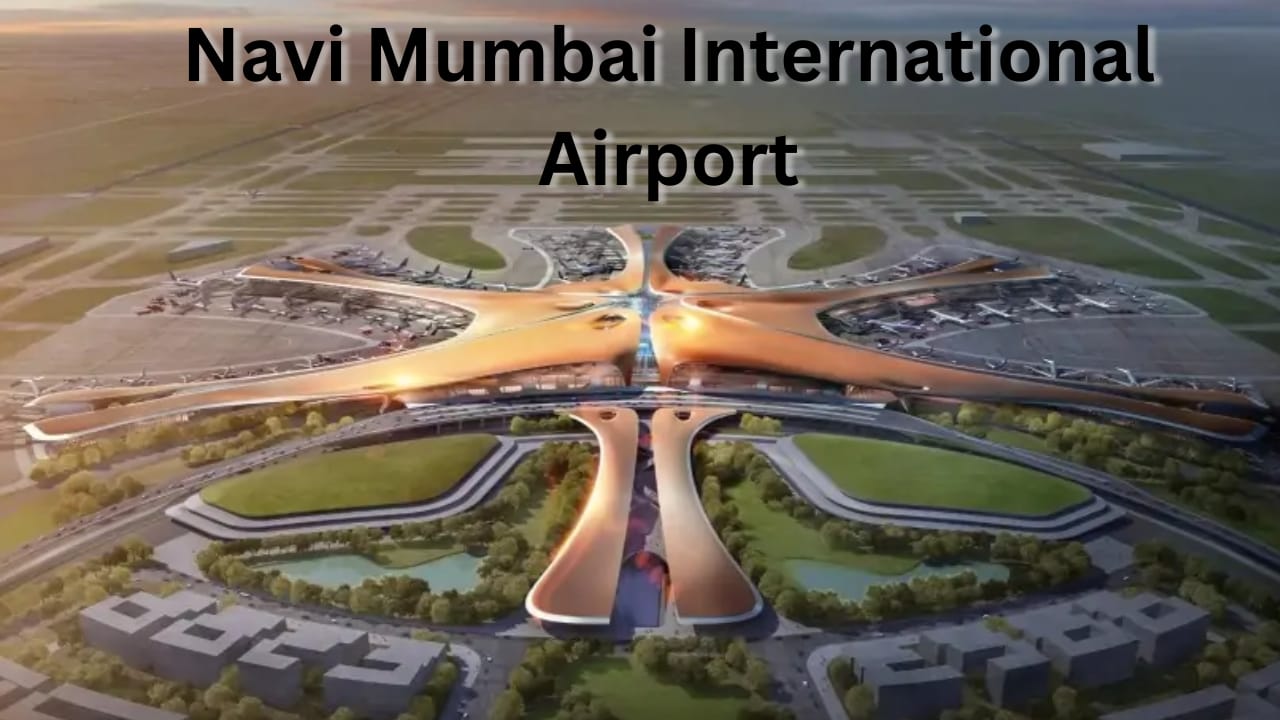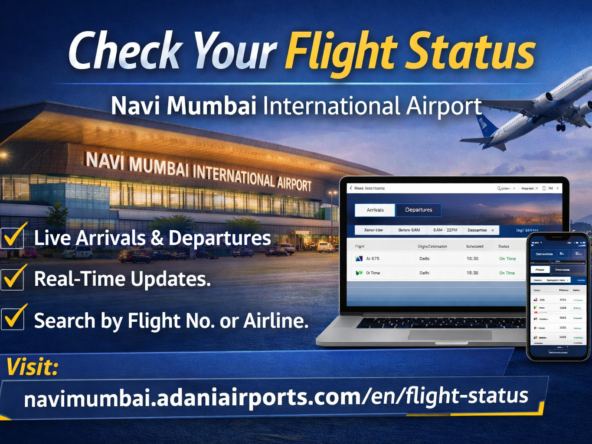Introduction
Navi Mumbai International Airport (NMIA) is a landmark project poised to transform the region’s infrastructure, economy, and connectivity. Located in the Raigad district of Maharashtra, NMIA is envisioned to ease the congestion at Mumbai’s Chhatrapati Shivaji Maharaj International Airport (CSMIA) and cater to the growing air traffic demands of Mumbai and its surrounding areas. The development of NMIA represents a significant leap in India’s aviation sector and a pivotal moment in the growth of Navi Mumbai.

Background and Rationale
Mumbai’s existing airport, CSMIA, has been operating beyond its capacity, handling over 50 million passengers annually despite being designed for 40 million. The need for a second airport has been a long-standing demand to alleviate the pressure on CSMIA and ensure efficient handling of air traffic. Navi Mumbai, with its strategic location and potential for expansive development, emerged as the ideal site for this mega infrastructure project.
Project Overview
Location and Design
The Navi Mumbai International Airport is being developed on a 2,268-hectare site in the Panvel-Kopra area. Its design incorporates state-of-the-art technology and sustainability principles. The airport will feature two parallel runways, each 3,800 meters long, capable of handling large aircraft such as the Airbus A380. The terminal buildings will be equipped with modern facilities, ensuring a seamless experience for passengers.
Phases of Development
The development of NMIA is planned in four phases. The first phase aims to handle 10 million passengers per year (MPPA), which will gradually increase to 20 MPPA, 30 MPPA, and finally 60 MPPA by the fourth phase. This phased approach ensures that the infrastructure can grow in tandem with the increasing air traffic, avoiding any operational bottlenecks.
Economic Impact
Job Creation and Economic Boost
The construction and operational phases of NMIA are expected to generate substantial employment opportunities. During the construction phase, thousands of jobs will be created, providing a significant boost to the local economy. Once operational, the airport will generate direct and indirect employment opportunities in aviation, hospitality, retail, and other associated sectors.

Real Estate Development
The airport is a catalyst for real estate development in Navi Mumbai. With improved connectivity, the region is witnessing a surge in residential, commercial, and industrial projects. The airport vicinity is being developed as an Aerocity, featuring hotels, convention centers, and business parks, attracting investments and enhancing the area’s economic landscape.
Infrastructure and Connectivity
Road and Rail Connectivity
NMIA is being integrated with a robust network of road and rail infrastructure. The Mumbai Trans Harbour Link (MTHL), a 22-kilometer sea bridge connecting Mumbai with Navi Mumbai, will significantly reduce travel time between the two cities. The upcoming Navi Mumbai Metro project, with a dedicated line to the airport, will further enhance accessibility.
Environmental Considerations
The project has incorporated several measures to mitigate environmental impact. The airport’s design includes rainwater harvesting systems, energy-efficient buildings, and extensive green cover to ensure sustainable development. The project also involves the rehabilitation of affected communities, ensuring that development is inclusive and equitable.
Challenges and Solutions
Land Acquisition and Rehabilitation
One of the significant challenges faced by NMIA has been land acquisition. The process involved the relocation of several villages and the rehabilitation of affected families. To address these challenges, the authorities implemented comprehensive rehabilitation packages, including monetary compensation, alternative housing, and employment opportunities for the displaced communities.
Environmental Clearances
The project required multiple environmental clearances due to its proximity to ecologically sensitive areas like mangroves and wetlands. The developers worked closely with environmental experts and regulatory bodies to ensure compliance with environmental norms and minimize ecological disruption.
Future Prospects
Boost to Tourism
With NMIA set to become a major international gateway, the tourism industry in Maharashtra is expected to receive a significant boost. The airport will provide direct connectivity to various domestic and international destinations, attracting tourists and enhancing the state’s tourism potential.
Economic Hub
Navi Mumbai is poised to become an economic hub with the operationalization of NMIA. The airport’s presence will attract multinational companies, leading to the establishment of corporate offices and industrial units. This development will foster economic growth, not just in Navi Mumbai but also in the adjoining regions.
Technological Advancements
Smart Airport Features
NMIA is designed to be a smart airport, integrating advanced technologies for efficient operations. From automated check-in and baggage handling systems to advanced security protocols, the airport will offer a seamless and secure experience for passengers. The use of artificial intelligence and data analytics will enhance operational efficiency and passenger convenience.
Sustainability Initiatives
The airport’s design incorporates several sustainability initiatives. Solar panels will be installed to harness renewable energy, and waste management systems will be implemented to ensure minimal environmental impact. The airport aims to achieve LEED (Leadership in Energy and Environmental Design) certification, reflecting its commitment to sustainability.

Conclusion
The Navi Mumbai International Airport is a transformative project that will redefine the region’s connectivity and economic landscape. Its development marks a significant milestone in India’s aviation sector, addressing the burgeoning air traffic demands and providing a world-class travel experience. The airport’s impact extends beyond aviation, acting as a catalyst for economic growth, real estate development, and infrastructure enhancement in Navi Mumbai.
As the airport moves closer to its operational phase, the anticipation and excitement among stakeholders continue to grow. NMIA is not just an infrastructure project; it symbolizes progress, development, and a new era of connectivity for Navi Mumbai and the entire nation. With its advanced design, sustainable practices, and economic potential, NMIA is set to soar high, paving the way for a prosperous future.





